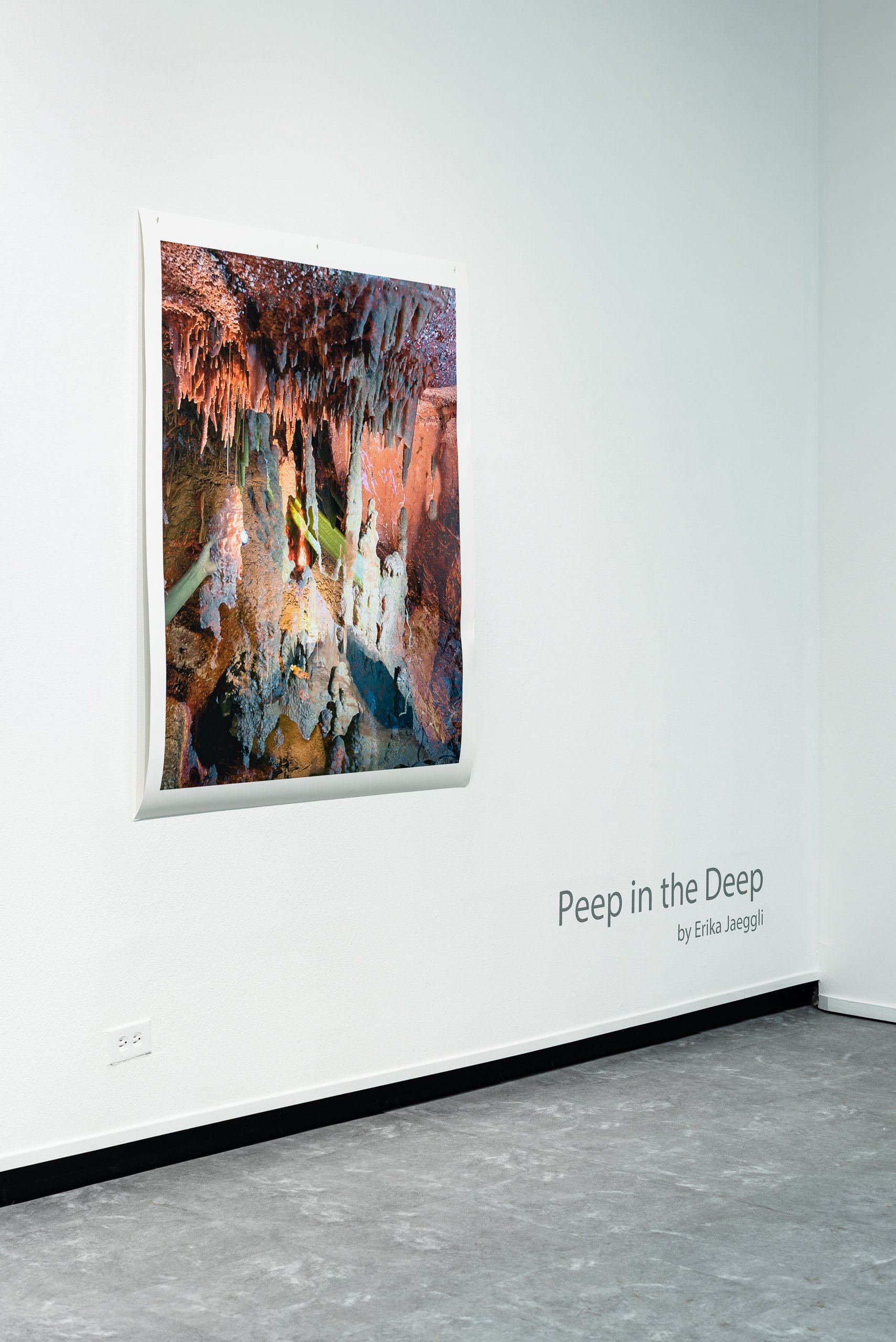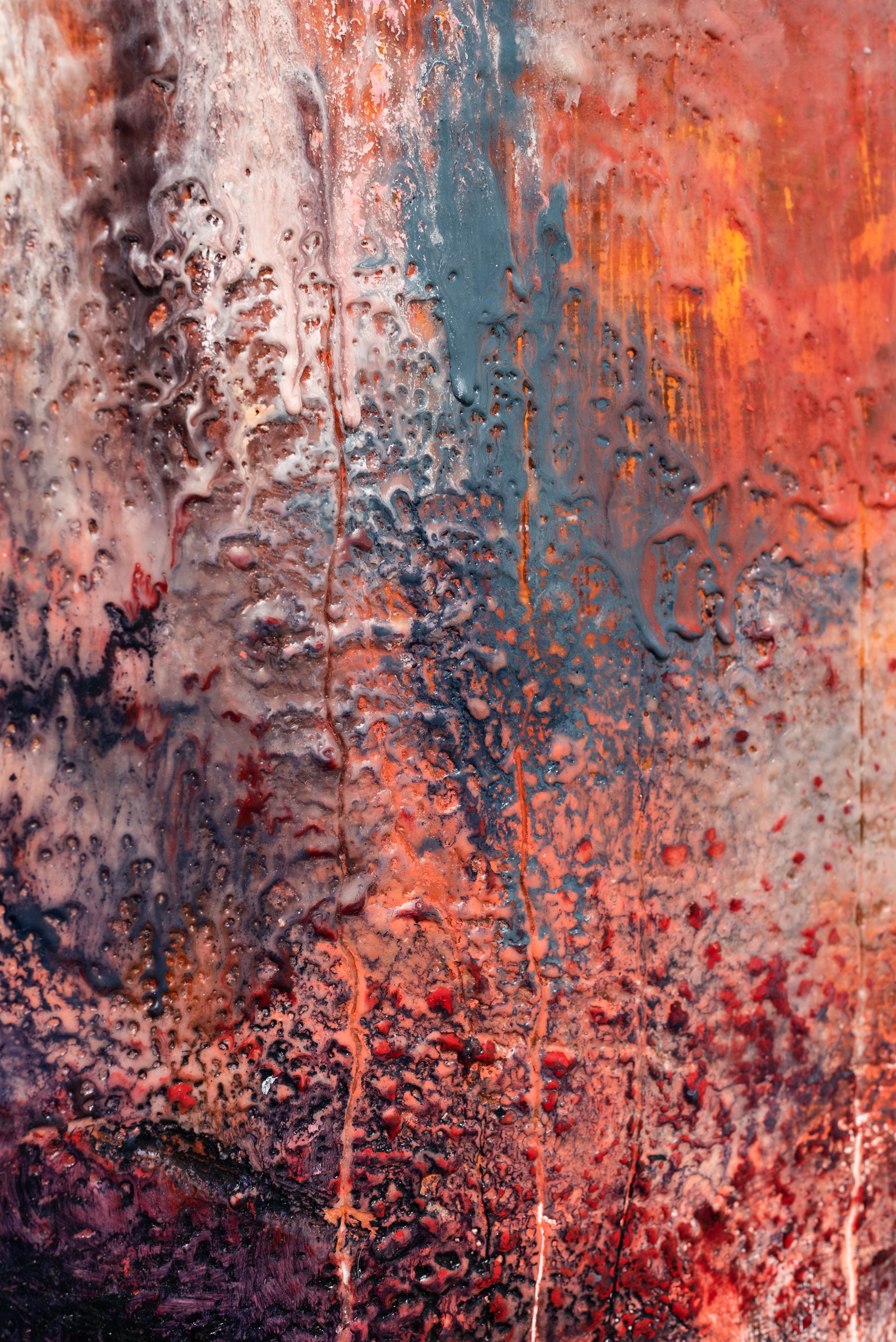peep in the deep
arts fort worth
fort worth, TX
october 7 - november 26, 2022
Peep in the Deep is an exhibition of new works by Dallas-based artist Erika Jaeggli. The paintings presented here are a continuation of Jaeggli’s ongoing investigation into cave systems. Caves are an important part of Jaeggli’s research with their other-worldly formations, scale, geometry, and colors. Conceptually, they represent an intersection of art, history, geology, and philosophy. In cultures throughout the world, caves often have a gendered association and are known the “womb” of the earth. Considering an alternative view of the landscape through a feminine lens is an important concern when creating these works. Rather than the traditional approach to landscape painting in which the viewer gazes upon the earth from a distance, these works ask the viewer to look inside the earth. Entering a cave feels like entering a body. Through these works, the artist’s aim is to dissolve boundaries and present the earth as a living, breathing organism. The works that make up this exhibition are a cross-section of Jaeggli’s process. The paintings combine digital collage, encaustic wax, and oil paint. The process of joining new and traditional media is a nod to the artist’s contemporary interpretation of caves, which are the sites of the ancient forms of art.
International Year of Caves and Karst
Part of my interest in caves comes from a deep personal concern about the earth, its natural resources, and the effect of human activity upon these. Providing information about the importance of cave and karst landscape is part of the mission of this exhibition and my work. I am taking part in the International Year of Caves and Karst, which was created by the International Union of Speleology (UIS) to “explore, understand, and protect” caves throughout the world.
From the IYCK website:
The UIS International Year of Caves and Karst - IYCK - is a worldwide project to teach everyone about these critically important and widespread natural resources. Although awareness of the sensitivity of karst is increasing, it continues to be threatened by human activities in many parts of our planet. In fact, many of the world's unique hydrological, ecological, and culturally important cave and karst landscapes are being damaged or threatened daily.
Karst is a type of landscape that covers an estimated 20% of the world’s land surface. Karst is a special type of landscape that is most common in carbonate rocks and the majority of the world’s caves are in these rocks. Caves are natural, humanly enterable underground voids. Some carbonate rocks have surface karst but no caves. Some other rocks, especially evaporites, have surface karst landforms but caves are less common. Caves are also found in non-karst rocks, especially lava caves and caves in coastal settings. On the surface karst takes many forms, which makes it difficult for the average person to recognize. Some are dramatic and scenic. Much of karst landscapes are also hidden from view in caves.
Caves and karst are priceless resources. Karst aquifers provide an estimated 16% of the world’s drinking water, and include the largest wells and springs on Earth. Caves and karst are home to many of the planet’s most diverse, important, and rare ecosystems, supporting ecological diversity above and below the ground. The world’s most significant cultural and archaeological sites often are found in karst and non-karst caves. Hundreds of caves are open to tourism around world, many in World
Heritage sites. About 150 million tourists visit caves each year, providing vital support to many national economies. While caves and karst benefit all societies, they also present some unique challenges.
To learn more about it, please visit their website: http://www.iyck2021.org


















































